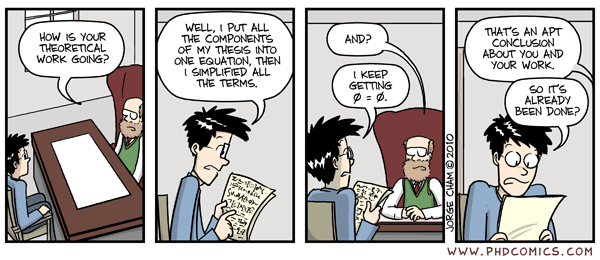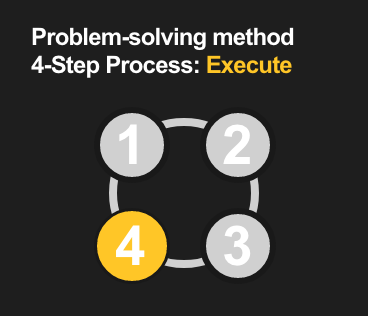Apply our problem solving method
Career Wise Menu
Follow problem solving steps: Execute and Evaluate

Learn four aspects to executing and evaluating:
- 4A: ACT on your plan
- 4B: EVALUATE whether the desired outcome was achieved
- 4C: CYCLE back to step 1 if the outcome was not achieved
- 4D: REVIEW what you have learned
Now it’s time to try your plan. Whatever strategy you choose, follow through with it. Feel confident that you’ve planned out your strategy thoughtfully and prepared in advance to handle it appropriately. If this one does not work out, you have other plans you can draw on.
After you’ve implemented your plan, take some time and ask yourself the following questions:
How do I think that went?
How do I feel now that I did it?
What are the tangible outcomes from the solution strategy I used?
Did I get what I wanted?
What, if anything, is missing from what I wanted to achieve?
What is my timeline for follow-up?
Do I need to revisit the same situation with a different strategy or plan?
Make sure to give yourself some breathing room in between executing your plan and evaluating it. You may have many emotions tied to your experience, so taking some time to reflect on it can be very helpful.
If a first attempt to solve a problem doesn’t work, people sometimes get discouraged and settle for accepting the situation as it is. Persistence is key. If you stay focused on the outcome you want, you will find it easier to put in continuous effort.
If you have not achieved what you wanted through the initial approach you took, go back and revisit what you identified as the problem. Are you sure you tackled the underlying issue? Continue to cycle through the problem-solving steps until you are satisfied with the outcome.
Keep in mind that regardless of how your situation works out, it’s important to know that trying to fix it is still better than doing nothing. People sometimes personalize a bad situation and blame themselves for making a poor decision or for failing. If one plan doesn’t work out, it is not a reflection of your character. Rather, it is a way to learn what doesn’t work so you can do better next time.
Take the time to look at the situation without emotion and judgment. Removing value judgments is helpful to better understand the situation and become clearer about what will work. You can decide either to maintain the plan of action you took or try something different. You should feel free to change and adjust any of your strategies — nothing is set in stone.
Review what you learned, and how you can apply the learning to other situations.
After you have used the problem-solving method with a difficult situation, you are left with a wonderful opportunity to reflect on what you learned and how it might apply to other interpersonal issues in your academic or personal life. Often, the review and reflection process is where we make the biggest strides towards integrating new learning and new behaviors. Whether things did or did not go the way you would have hoped, you learned something, and that in and of itself is progress.
Keeping the bigger picture in mind is also important. Although you may be frustrated about a certain situation, there are many things that you have done that are positive and productive. You should not lose sight of them. You’ve made good progress so far!
Remember, you can use the same problem-solving method and strategies for other issues that come up. When you try different tactics, you develop a repertoire of problem-solving skills. You learn what works for you as well as how the people in your immediate environment react to your approach. Ultimately, it’s a balance between what works for you and what will achieve the outcomes you want.
An Example of How to Negotiate (Part 2)
Strategies for negotiating as a faculty member.
Possible and Impossible Selves
The importance of self-authorship and using graduate school as a process for self-definition.
Isolation and a Proactive Solution
Alternatives to departmental isolation and the importance of networking.
Undergrad Science vs. Real Life Science
Highlights the transition into graduate level science where the answers aren't known.
Emphasizes the joy of being a faculty member.
The process of overcoming setbacks related to career options and personal relationships.
The selfish satisfaction of "I did it" as motivation to persist despite obstacles.
Apply Problem Solving Side Menu
An Arizona State University project, supported by the National Science Foundation under grants 0634519, 0910384 and 1761278
Any opinions, findings, and conclusions or recommendations expressed in this material are those of the authors and do not necessarily reflect the views of the National Science Foundation. © 2021 CareerWISE. All rights reserved. Privacy | Legal




